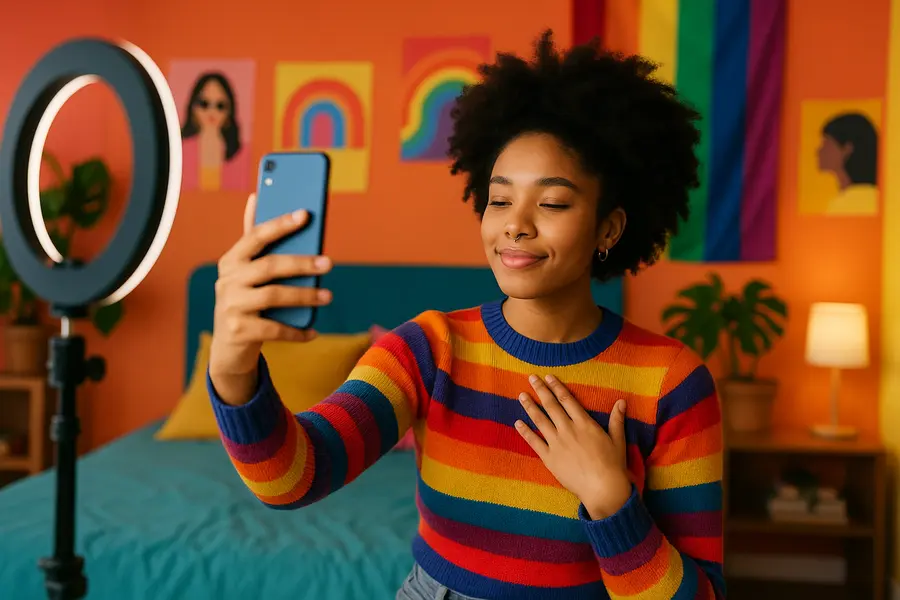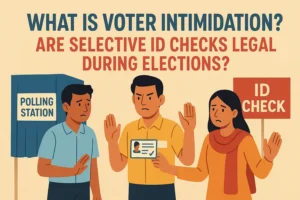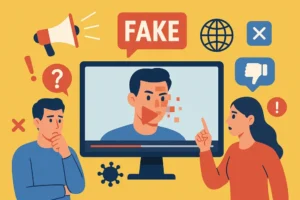Influencer Culture as a Catalyst for Identity Formation
Influencer culture significantly impacts identity formation, particularly for adolescents and young adults.
Imagine scrolling through endless feeds where influencers share everything from morning routines to bold opinions. Their curated authenticity makes us pause and think: who do I want to be?
Through relatable stories, trendsetting, and community engagement, influencers spark self-discovery, encouraging us to experiment with style, values, and dreams.
Influencers offer real-time feedback loops—likes, comments, shares—that validate growth, foster meaningful connections, and reshape how we see ourselves in the digital mirror.
Are you ready to learn why influencer culture is reshaping youth identity around the world? Let’s get started.

Why Influencer Culture Is Reshaping Youth Identity Worldwide: A Sociological Analysis
Examine how influencer culture—through curated authenticity, algorithmic validation, global digital communities, and economic incentives—reshapes self-concepts, social norms, and youth identity construction in the modern online landscape worldwide.
Introduction: The New Digital Mirror
Every day, young people scroll through feeds filled with influencers—curated snapshots of an aspirational life.
They see peers and celebrities alike flaunting perfect moments, from morning routines to luxury getaways. This constant exposure turns social media into a mirror that reflects not just how the world sees them, but how they see themselves.
In many ways, today’s youth are building their identities in public, one post and one hashtag at a time. Let’s dive into why this cultural shift matters on a global scale.
But what happens when identity formation moves online? Unlike past generations, youth now learn social norms, values, and self-worth from digital role models. Those role models come with filters, sponsorships, and millions of followers—shaping what success, beauty, and achievement look like.
As we explore this transformation, we’ll uncover how platforms, peer validation, and global trends are redefining the journey from childhood to selfhood.
The Rise of Influencer Culture
It all started when the barrier between celebrity and everyday user dissolved.
Suddenly, anyone with a phone, a unique perspective, and a knack for storytelling could attract thousands—even millions—of followers. This democratization of fame turned micro-communities into powerful movements and reshaped who we look up to.
Youth today aren’t just consuming content; they’re aspiring to become content creators themselves. That ambition rewrites traditional ideas about status and influence.
Influencer culture thrives on authenticity, or at least the illusion of it, and youth gravitate toward voices that feel relatable.
When an influencer shares struggles with mental health or celebrates small wins, it forges an emotional bond. That bond turns followers into fans, and fans into budding influencers who mimic their digital mentors.
This viral cycle accelerates the spread of ideas and norms, carving out new pathways for identity formation. It’s not just a trend—it’s a cultural force.
Social Media Platforms as Identity Arenas
Imagine platforms as stages and your profile as the main act. Each social media network offers different tools—Stories on Instagram, threads on Twitter, videos on TikTok—that youth use to craft their persona.
The architecture of these platforms influences what gets shared and how it’s interpreted.
A 15-second clip can overshadow a long-form blog, altering the pace at which identities evolve.
Platforms incentivize certain behaviors through likes, comments, and algorithmic boosts.
For Gen Z and younger millennials, these arenas serve as social laboratories. Here, they experiment with aesthetics, tones, and narratives to see what resonates. They test fashion trends one day, political opinions the next, refining their self-concept in real time.
The metrics attached to each post function like peer feedback—even a single “like” or “share” can validate an aspect of their identity.
Ultimately, these digital stages become the driving force influencing not only what youth create, but who they become.
Peer Validation and Self-Worth
Younger generations have always sought approval from peers, but now that quest unfolds publicly and numerically.
Engagement metrics—likes, comments, shares—quantify social acceptance in ways previous systems could not. This constant tally becomes a scoreboard for self-esteem, making validation addictive.
When youth receive praise on a post, they get a dopamine hit that reinforces certain behaviors and self-presentations.
However, the inverse is also true: low engagement can feel like rejection. That fear of underperformance drives many to curate their lives around what they believe will garner attention. It can lead to a cycle of comparison, where youth measure their value against filtered versions of their peers.
While peer validation can foster connection and confidence, it also risks tying self-worth to an ever-shifting digital standard.
Curated Authenticity and the Ideal Self
Is authenticity really the unfiltered truth, or just another carefully crafted angle? Influencers sell “realness” by showing behind-the-scenes moments, yet these are often thoughtfully edited.
Youth learn to balance genuine expression with strategic curation, crafting an “ideal self” that’s both relatable and aspirational. This blend of authenticity and polish becomes the new normal for self-presentation.
Over time, the distinction between real and staged blurs. Teens might share a raw emotion one day and a photoshopped outfit the next, learning that authenticity on social media means controlled vulnerability. They internalize these mixed signals, believing that to be “real,” they still need to perform.
Consequently, the journey towards self-discovery comes with a roadmap drawn by curated feeds and polished personas.
Community Belonging and Subcultures
Online influencers often anchor digital subcultures—think booktokers, fitness gurus, or eco-activists—where youth find a sense of belonging. These niche communities validate shared interests and values, fostering camaraderie across geographies.
Participation offers youth a way to express facets of their identity that may go unrecognized in their offline environments. For many, these subcultures become lifelines, offering support and acceptance.
Membership in these groups also shapes self-perception. When a teen identifies as a “sustainability advocate” or a “k-pop stan,” they adopt the norms, jargon, and aesthetics associated with that community.
Influencers act as both role models and gatekeepers, guiding what it means to belong. In this way, digital subcultures play a dual role: they empower youth to explore new identities, yet subtly dictate the rules of engagement.
Economic Incentives and Aspirational Lifestyles
Influencer culture isn’t just about self-expression—it’s big business. Brand partnerships, affiliate marketing, and sponsored content turn followers into revenue streams.
Youth witness their idols monetizing passion projects and, in turn, see social media as a potential career path.
The promise of income based on creativity and personal branding is incredibly enticing, especially in uncertain job markets.
This economic angle fosters an aspirational mindset. Teens learn early that certain aesthetics, lifestyles, or opinions attract higher payoffs. They begin to father their content strategy around marketability, honing skills in editing, storytelling, and negotiation.
The result?
A generation growing up with entrepreneurial ambitions baked into their identities, viewing online influence as both a form of self-expression and economic empowerment.
Globalization and Cultural Convergence
One of the most profound effects of influencer culture is its borderless reach.
A teenager in New Delhi can follow a fashion influencer in Paris, adopting global trends within hours. This accelerated cultural exchange blurs national identities and creates hybrid self-concepts influenced by multiple cultures.
Youth today curate global wardrobes, embrace foreign slang, and remix international aesthetics.
While this convergence fosters cross-cultural understanding, it also raises questions about authenticity and cultural appropriation.
Young people must navigate honoring influences respectfully while forging their unique identity. They integrate global elements into local contexts, producing new cultural hybrids.
Ultimately, influencer-driven globalization reshapes youth identity by making the world not just a backdrop, but an active, interactive canvas.
Challenges of Digital Identity Fragmentation
As youth adopt different personas across platforms—LinkedIn for professionalism, Instagram for lifestyle, TikTok for humor—they risk fragmenting their identity.
Each channel has its own rules and audiences, pushing young users to perform a distinct version of themselves in each space. This compartmentalization can lead to a feeling of disconnection from one’s true self.
Over time, maintaining multiple digital personas becomes exhausting.
Teens may struggle to reconcile these versions into a cohesive whole, leading to identity confusion.
When feedback varies drastically across platforms, it can also trigger self-doubt. The challenge lies in integrating these disparate facets into a unified identity that feels authentic both online and offline.
Mental Health Implications of Influencer Comparison
Comparing oneself to idealized influencers can take a toll on mental health.
Constant exposure to carefully selected highlight reels breeds envy, anxiety, and feelings of inadequacy.
Youth may internalize the belief that their unfiltered life falls short of digital standards, leading to decreased self-esteem and heightened stress.
Moreover, the pursuit of validation through likes and comments can contribute to addictive behaviors and mood swings.
When engagement metrics dip, teens often experience emotional lows. Mental health professionals are increasingly concerned about these dynamics.
Addressing them requires digital literacy, open conversations, and mindful social media use to ensure that youth cultivate resilience alongside their online identities.
Read More: How Social Media Shapes Youth Mental Health
Youth Empowerment and Digital Activism
It’s not all superficiality and self-doubt— influencer culture also fuels social change.
Young people leverage their followings to spotlight issues they care about, from climate action to mental health awareness.
Influencers who use their platforms for good inspire peers to find their voices and mobilize online communities for real-world impact.
This form of digital activism reshapes youth identity by framing social responsibility as integral to self-concept.
Teens see that standing up for causes aligns with authenticity and can even enhance social standing. As a result, youth identity becomes intertwined not just with personal branding, but with collective purpose and civic engagement.
Read More: The Sociology of Online Activism and Social Change
Navigating Online Identities: Education and Literacy
Given the complexities of online identity formation, media literacy has never been more critical.
Schools and parents can play a role by teaching youth how algorithms work, how to spot sponsored content, and how to critically evaluate influencers’ messages.
Equipping young users with these tools helps them make conscious choices about the personas they adopt and the role models they follow.
Digital citizenship programs also encourage reflection on privacy, mental health, and the ethical use of platforms.
When youth understand the mechanics behind their feeds, they can reclaim agency over their identity journeys.
Informed navigation reduces the risk of manipulation and fosters a healthier balance between their online and offline selves.
The Future of Youth Identity in the Age of Influence
Looking ahead, technology will only deepen the ties between influencer culture and identity.
Virtual reality avatars, AI-driven recommendation engines, and immersive social experiences will provide even more personalized mirrorings of the self.
Youth will curate identities not just through posts, but through interactive, multisensory worlds that evolve in real time.
This next frontier holds promise and peril. On one hand, more nuanced self-expression and community building await; on the other, the boundary between reality and performance will blur further.
Preparing youth for this world means fostering critical thinking, ethical awareness, and emotional resilience.
As influencer culture continues to reshape identity, guiding the next generation toward self-discovery and well-being will be our greatest challenge—and opportunity.
Read Here: The Influence of Online Communities on Social Movements
Conclusion: Charting a Balanced Path
Influencer culture has undeniably transformed how youth around the globe form their identities.
From peer validation and aspirational lifestyles to digital activism and global convergence, every swipe and tap carries meaning.
While challenges like identity fragmentation and mental health risks are real, they come with opportunities for empowerment and social change.
By promoting media literacy, encouraging authentic self-exploration, and fostering open dialogues about mental health, we can help young people harness the positive aspects of influencer culture.
Ultimately, youth will continue to shape—and be shaped by—digital ecosystems.
Our role is to ensure that their journey toward identity formation remains grounded, mindful, and true to who they want to become.
Read Here: The Sociology of Cancel Culture and Social Norms





